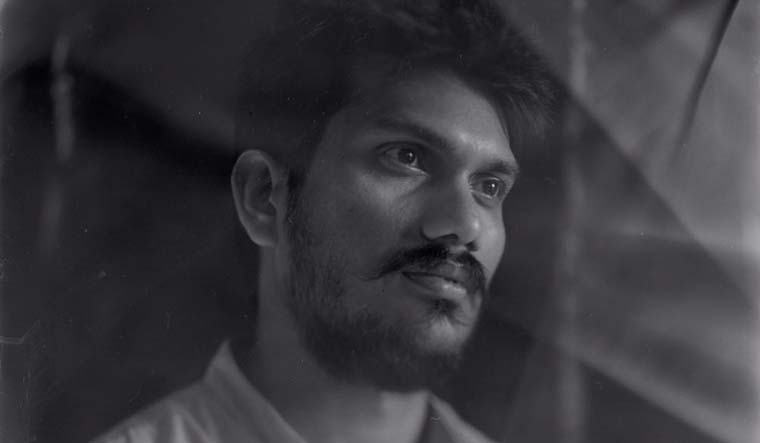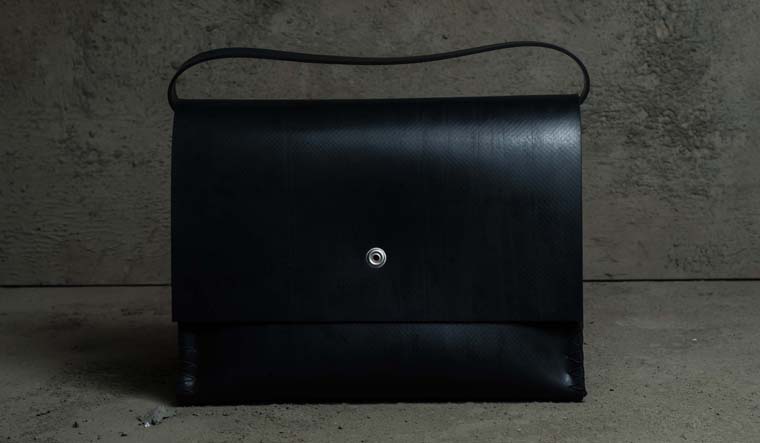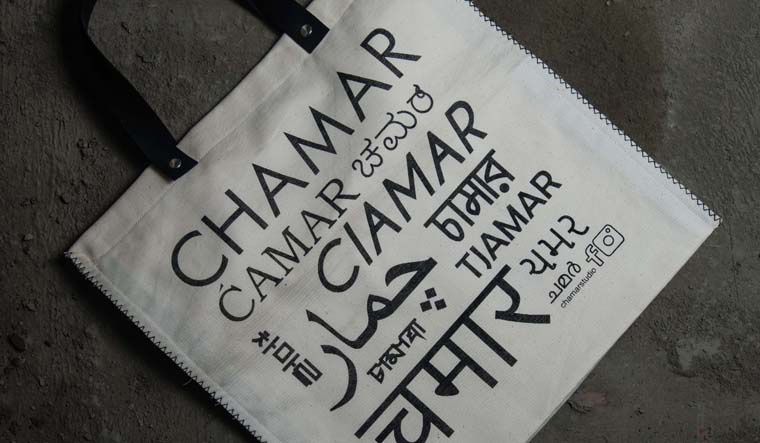"When I return to my village in UP, some people use the words 'bhar' and 'chamar', in the same breath, as insults. Perhaps because it rhymes well," says Mumbai-based multidisciplinary artist Sudheer Rajbhar over the phone. Today, he wants to infuse new meaning and pride in a word traditionally used as a pejorative by the upper castes for people who work with leather. Rajbhar's six-month-old designer label, Chamar Studio, has roped in dalit leather craftsmen from Dharavi who have been affected by the beef ban. For their first batch of products, which includes sleek, minimalist bags and belts in black, Rajbhar has trained his artisans to work with recycled rubber tyre sheets, cotton and latex. His staff also includes former cobblers and sweepers from the slum settlement.
Thirty-two-year-old Rajbhar, who is from the OBC category in UP, wants to make Chamar Studio a high-end designer brand, a force to be reckoned with. "If we associate the word 'chamar' with something good, it will gain more respect. Otherwise, it will continue to be used as an abuse and invective," says Rajbhar, about the naming of his company, which he says is registered. "Imagine, if my company becomes a brand, people will go 'wow'."
 Artist Sudheer Rajbhar | Linesh Desai
Artist Sudheer Rajbhar | Linesh Desai
The Studio, which was once the house where Rajbhar was born, is situated in a smaller slum area in Kandivali. His father migrated there from a village in Kheta Sarai from Jaunpur district in Uttar Pradesh after getting a job in the post office. Rajbhar has invested close to Rs 3 lakh in refurbishing the place, and with some additional funding, he hopes to turn the space into a library stocked with books on contemporary design, which his artisans can benefit from. He also wants a single work table in the middle of his library, echoing a design aesthetic which is as uncomplicated and smooth as his sling bags. Nothing will give him more joy than to see this space, bursting with personal memories, to be turned into a crucible for artistic collaboration, communication and exchange.
But this is not the first time that Rajbhar has used his art to make a point about social stratification. In 2010, Rajbhar completed his art education in drawing and painting from Vasai Vikasini in Thane district, and was looking for work when he realised "bigger galleries don't entertain people from small art schools". So he started assisting senior artists and worked in residencies. Last year, he curated a group show on works by assistants and apprentices of bigger artists. Shown at the Clark House Initiative in Mumbai, the exhibition was called "We are here because you are there" and included works by seven artists, some of whom were unskilled artisans and daily wage labourers when they started out. "This is not a charity project, but rather one where assistants display their refined ability at conceptual art," read the curatorial note of the show. Earlier this year, at the Jehangir Art Gallery's exhibition for the Kala Ghoda festival, Rajbhar made black-coloured "thailas" with the help of cobblers for a video project. He fashioned them into small black houses filled with objects like frames and letters drawn from demolished houses of low-income groups.
 The first batch of Chamar Studio products includes sleek, minimalist bags and belts in black | Debdeep Roy
The first batch of Chamar Studio products includes sleek, minimalist bags and belts in black | Debdeep Roy
Now, Rajbhar has many local artisans keen on collaborating with him for his Studio work. But he can accommodate only so much because of his limited capital. The products from the Studio range anywhere between Rs 1,500 to 6,000 and a retail house from Kolkata called Living Free is soon going to stock them. Rajbhar has reached out to concept stores like Bungalow 8 in Mumbai and wants to pan out to Delhi and Bengaluru soon. He is currently in the process of researching other recyclable, organic fabrics and his next collection will be entirely in blue, inspired from the uniforms of railway employees.
He says the way his staff has worked with rubber tyre sheets to make soft and comfortable bags, as opposed to existing hard and bulky alternatives, is something he is quite proud of. "The material I am working with is natural rubber, which, for me, is like black skin," says Rajbhar.


